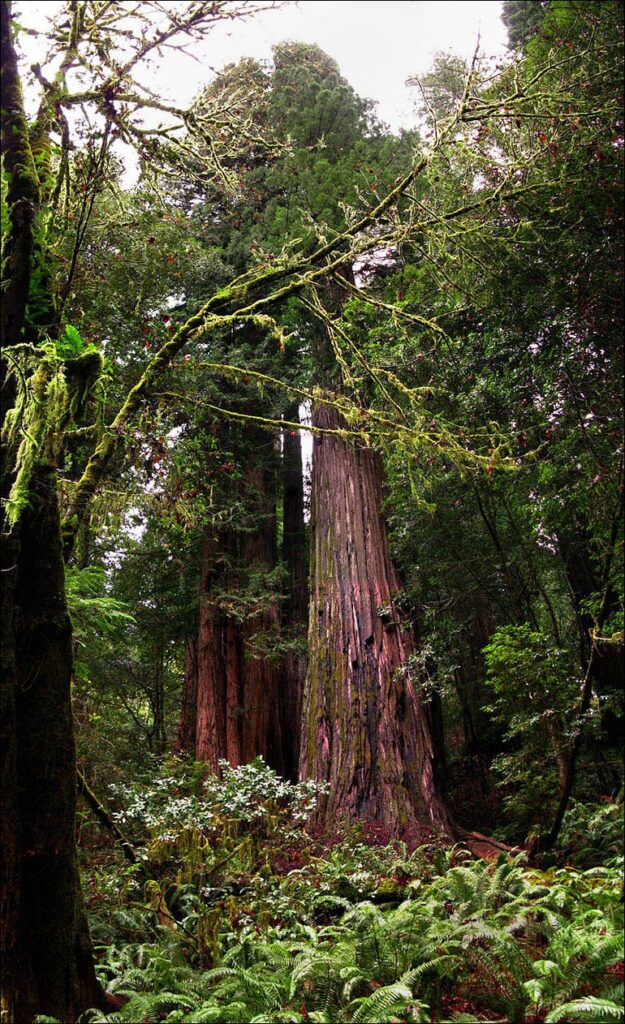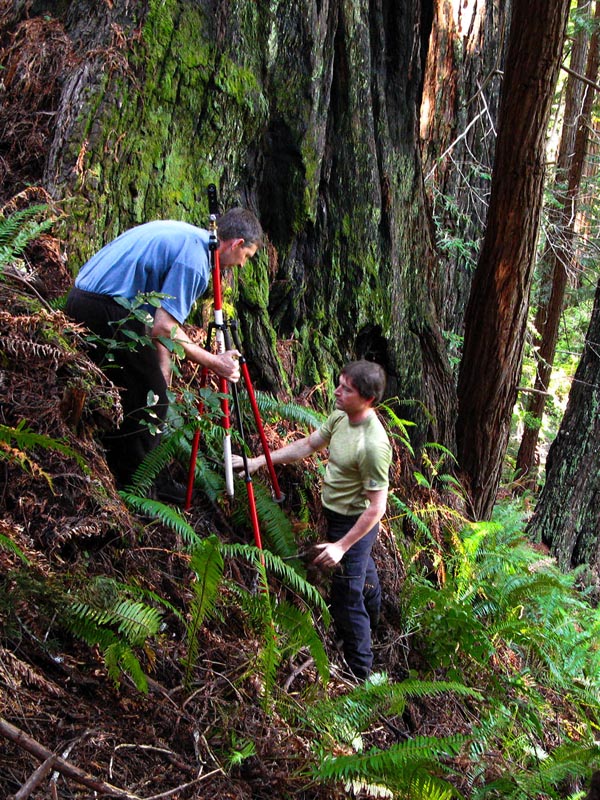Is there a better way to measure trees?
Before we dive straight into tree height, take a moment to reflect on childhood. Over the years, did your parents measure you from head to toe? Or did they hold the tape at your ankle and measure to the top of your head? Maybe this can be applied to measuring trees.
Presently, American Forests, Guinness Book and scientists use a similar method. There’s an aspect they adopt for the top that they omit for the ground level area. For the top, they mark the highest leaf , wood or tissue. And it doesn’t matter if it’s over the upslope, downslope, east or west. One point only, the tree’s greatest extent of cell growth upward. If a trunk breaks off 100 ft. up and a remaining branch goes higher than the break they are going to include the branch tip for total height.
Continue reading following this photo …

If somebody includes the tallest part of a tree that developed upward, is it logical to include the lowest part visible that grew downward?
The standard used in recent years employs averaging two height numbers because many trees grow on a slope. It could be a very gentle slope or a steep slope. But heights do differ between a trunk’s upslope and downslope sides. Those 2 heights are added together and divided in half. If a redwood is 295 feet tall from the upslope side and 305 feet tall from the downslope side the height will be recorded as 300 feet. That’s 295 + 305 = 600 / 2 = 300
So what standard really reflects redwood’s complete height?
The commonly recognized method never requires identifying the top of a trunk. Whether a tree has one trunk or many trunks that method always uses the tallest reach of foliage or tissue and it does not matter what side of the tree it’s attached to. It’s just any highest extension of cell growth over the years. If ANY tallest part of a tree is accepted, is it more logical to accept ANY lowest part of the trunk.
The fact that the low side of a trunk is used for an average shows that it’s recognized and accepted as trunk. There’s no question on that point.
Let’s apply this thought another way. Suppose a person you know is 5 ft. & 10 in. tall. If they stood sideways on a hill with one foot downslope and one upslope, do we still think of them as 5 ft. & 10 in. tall? Wouldn’t it make sense to measure from the ball of the lowest foot to the top of their head and hopefully find 5 ft. & 10 in.?
In closing, here’s what led to this idea of a single measurement from downslope to the top …
Imagine if it were possible to pull from a steep slope, bareroot, then dangle a tall coast redwood using a huge crane. What does your thought picture? Does it have a longest length that could be measured? It could be comparable to a Fender Jaguar guitar where the shape is irregular and a stat sheet would state the longest length end to end.
Can tree height be thought of in terms of length?
Look at the redwood below behind the men. It may have sprouted behind where Chris in the blue shirt is perched. But look at it downhill to the right. Is it true or false that this trunk extended itself down to that point? The trunk expanded, but would you agree that it also extended?
Cheers,
Mario Vaden, Certified Arborist ISA PN 5584A



Recent Comments